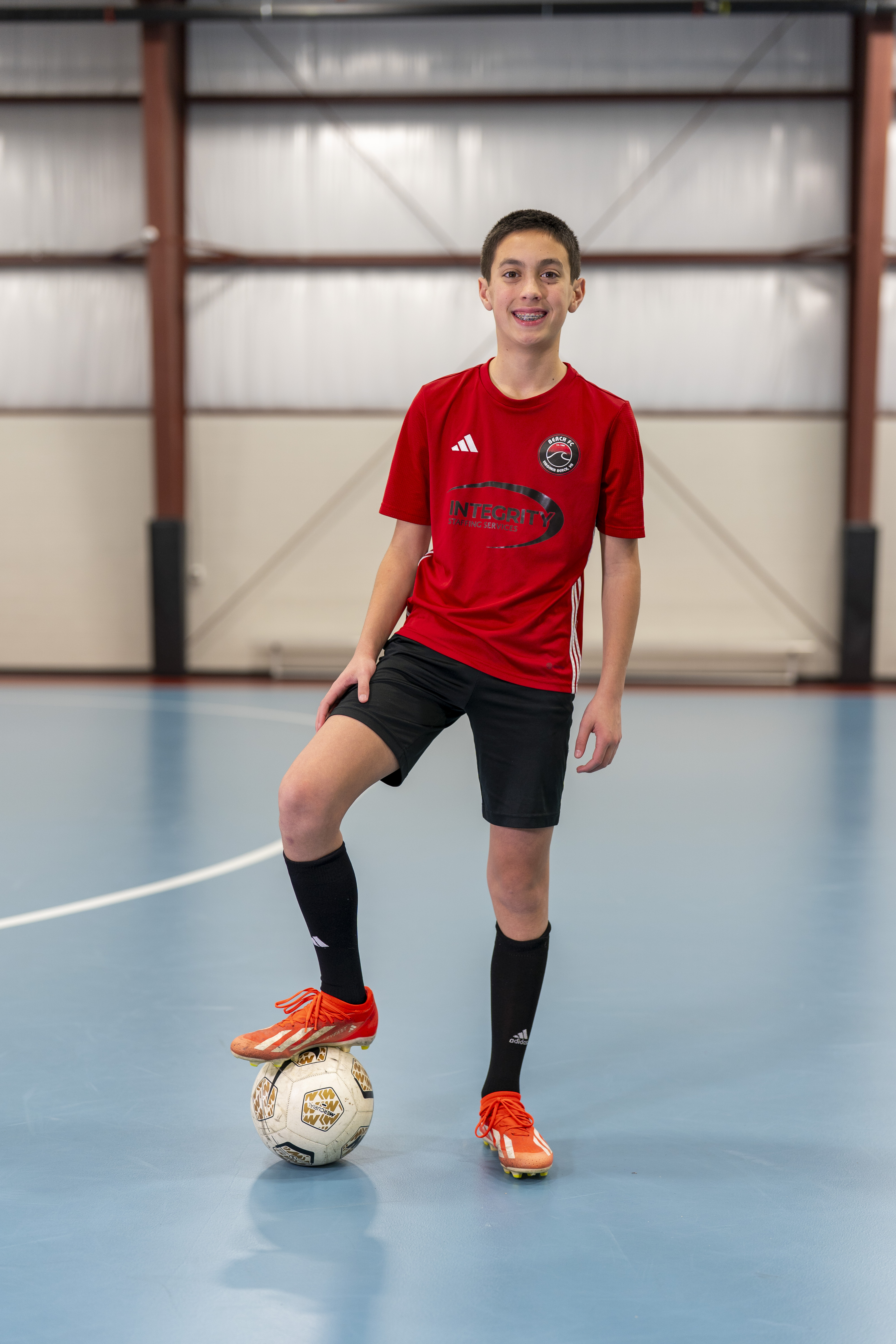
Surgeons give young athlete a fresh start using the da Vinci robotic surgical system
Knox Carter couldn’t stop throwing up. “He would get up in the middle of the night and throw up for three or four hours,” says Tony, Knox’s father.
Tony and Ashley, Knox’s mother, took 11-year-old Knox to an emergency department near their home in Chesapeake multiple times, growing more worried after every visit without an explanation of what could have been causing Knox’s episodes.
“We’d wait in the local ER so long that by the time we were seen, he was already feeling better,” Tony says. “Our neighbor said, ‘Next time, go to CHKD.’”
On December 26, 2022, Knox’s dad took him to CHKD during another bout of nausea and vomiting. Once at CHKD’s Emergency Department, Knox was seen quickly. Doctors ran tests to discover what was wrong.
A CT scan at CHKD revealed Knox had a ureteropelvic junction obstruction, or UPJ obstruction. His ureter, a tube that connects the kidney to the bladder, had a narrowing that caused a backup of urine into his kidney. This led to Knox’s episodes of nausea and vomiting, known as Dietl’s crisis.
“Dietl’s crisis can occur when children with a UPJ obstruction drink more fluids than the kidney can handle, causing urine to back up within the kidney,” says Dr. Janelle Fox, pediatric urologist and Chief of Pediatric Urology at CHKD. “The extra fluid basically overwhelms the body’s drainage system.”
She explained this to the Carters at Knox’s first appointment with her. “Dr. Fox is just so amazing,” Ashley says. “I think it speaks a lot to her character, her overall demeanor, and her professionalism that a boy Knox’s age gets excited when he has a visit with her. He really enjoys her. That’s a big deal.”
Dr. Fox told the Carters that a UPJ obstruction is typically treated with robotic-assisted surgery. Using robotic instruments, Dr. Fox would identify and remove the narrow part of the ureter. Next, she would sew it back together at the healthy ends over a silicone tube called a ureteral stent. The temporary stent acts like an internal cast to keep the ureter from swelling shut during the healing process and is removed a month later. The procedure is called a pyeloplasty.
“Dr. Fox was really thorough with Knox,” Ashley says. “She showed him the ultrasound and what she was going to do. She explained it all so Knox knew exactly what was going on.”
Knox would be one of the first patients to benefit from CHKD’s recent investment in the da Vinci robotic surgical system. With robotic-assisted surgery, patients benefit from smaller incisions with fewer narcotics, which are important factors for kids having surgery. Additionally, these minimally invasive procedures generally lead to shorter recovery time.
“The aim of robotic surgery is to achieve the same surgical outcomes through smaller incisions, which results in less pain, less blood loss, and quicker discharge home,” says Dr. Fox. “Technologies continue to miniaturize so we make smaller and smaller incisions. This is particularly beneficial for school-age children and working families because it allows them to get back to school and work faster.”
Dr. Fox performed Knox’s pyeloplasty in March 2023. Thanks to the minimally invasive nature of his surgery, he was able to go home after only one night at CHKD. Over the next few weeks, Knox had what he and his family described as an easy recovery: a month off from sports but returning to school after less than two weeks and being able to walk around on his own shortly after surgery. His temporary stent was removed with no complications.
“Dr. Fox said the robotic surgery would be the best option,” Ashley says. “We trusted her.”
Knox, now 13, plays soccer for Beach FC in Virginia Beach. He also runs track and plays the viola. He’ll have one more follow-up with Dr. Fox, and his family is thankful for the expert care he received at CHKD.
“We recommend it, especially for military families like ours,” says Ashley. “Now I always say, ‘Go to CHKD.’”
Published in CHKD's KidStuff Magazine, Summer 2025
Written by MaryClaire Hudson • Photograph by Ken Mountain


